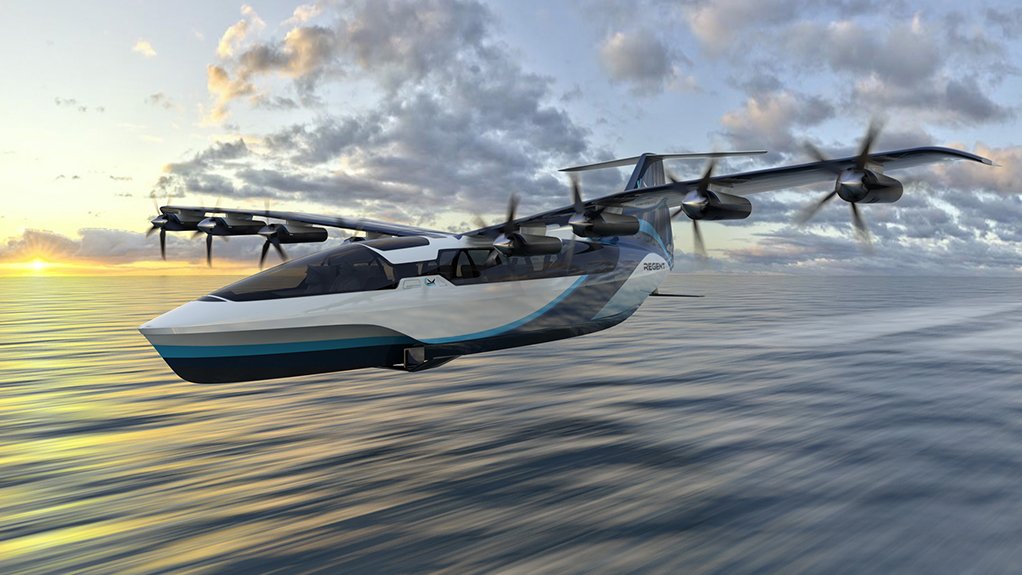US company developing innovative Wing-In-Ground-Effect craft using Siemens software
US company REGENT, which is developing a zero-carbon wing-in-ground-effect (WIG) vehicle, has adopted the Xcelerator cloud-based software and services portfolio from Siemens Digital Industries Software. This software portfolio is used for the design, engineering and development of the WIG vehicle, intended to transport people between coastal cities.
“Ground effect is the name given to the positive influence on the lifting characteristics of the horizontal surfaces of an aircraft wing when it is close to the ground. The effect is a consequence of the distortion of the airflow below such surfaces attributable to the proximity of the ground. It applies to both fixed and rotary wing aircraft,” is the definition provided by the aviation safety website SKYbrary.
Ground effect thus increases lift, and so increases flight efficiency. It also happens over water. And because the elevation of water does not vary enormously, unlike the elevation of land, WIG vehicles are very suitable for operation over water, especially the sea. Over the decades, a number of different designs have been built and tested, the most famous (and by far the biggest) being the Soviet Navy’s ‘Ekranoplans’. However, so far WIG designs have suffered from stability and corrosion problems.
REGENT is seeking to overcome these problems and exploit the efficiencies provided by ground effect, while eliminating carbon emissions by using all-electric propulsion for its craft, which it has confusingly named Seaglider. (The aerospace engineers who formed REGENT seem to be unaware that ‘seaglider’ is the accepted term for a category of deep-diving autonomous uncrewed underwater vehicles.)
The REGENT Seaglider will employ distributed electric propulsion and (unlike previous WIG types) be fitted with aerospace fly-by-wire controls. Another unprecedented aspect of its design is that it is fitted with retractable hydrofoils, which improve its tolerance of waves. In operation, it would float alongside a dock (existing infrastructure would be used), embark passengers, taxi out from the dock like a flying boat, then accelerate, rising up on to and running on its hydrofoils to speeds of up to 40 knots (nautical miles per hour), before actually taking off and then flying the rest of the way, in ground effect, at an altitude of only a few metres. The process would be reversed for landing and disembarkation.
Currently, the company, which was founded in 2020, is testing a one-quarter scale remotely-piloted technical demonstrator. This has progressed to the hydrofoil phase of the test programme. A full-scale prototype should be undergoing sea trials by 2023. The intent is to initially develop a 12-passenger WIG craft, named Viceroy by REGENT, which, it is planned, would enter commercial service in 2025. The Viceroy would, using current battery technology, have a range of 290 km and have a top speed of 290 km/h. (With next-generation battery technology, the range would be nearly trebled.) A number of companies have placed orders for the Viceroy, and paid deposits.
“At REGENT we are focused on bringing a revolutionary new vehicle to the transportation market with the potential to change how both people and freight move over the water,” affirmed REGENT chief technology officer and co-founder Mike Klinker. “As our Seagliders approach certification and full-scale commercial production, we need a robust, modern digital tools platform that supports the pace of our innovation cycles with the rigor to encompass a product as complex as ours. Siemens Xcelerator as a service was a perfect fit for a digital-first startup like ours.”
Comments
Press Office
Announcements
What's On
Subscribe to improve your user experience...
Option 1 (equivalent of R125 a month):
Receive a weekly copy of Creamer Media's Engineering News & Mining Weekly magazine
(print copy for those in South Africa and e-magazine for those outside of South Africa)
Receive daily email newsletters
Access to full search results
Access archive of magazine back copies
Access to Projects in Progress
Access to ONE Research Report of your choice in PDF format
Option 2 (equivalent of R375 a month):
All benefits from Option 1
PLUS
Access to Creamer Media's Research Channel Africa for ALL Research Reports, in PDF format, on various industrial and mining sectors
including Electricity; Water; Energy Transition; Hydrogen; Roads, Rail and Ports; Coal; Gold; Platinum; Battery Metals; etc.
Already a subscriber?
Forgotten your password?
Receive weekly copy of Creamer Media's Engineering News & Mining Weekly magazine (print copy for those in South Africa and e-magazine for those outside of South Africa)
➕
Recieve daily email newsletters
➕
Access to full search results
➕
Access archive of magazine back copies
➕
Access to Projects in Progress
➕
Access to ONE Research Report of your choice in PDF format
RESEARCH CHANNEL AFRICA
R4500 (equivalent of R375 a month)
SUBSCRIBEAll benefits from Option 1
➕
Access to Creamer Media's Research Channel Africa for ALL Research Reports on various industrial and mining sectors, in PDF format, including on:
Electricity
➕
Water
➕
Energy Transition
➕
Hydrogen
➕
Roads, Rail and Ports
➕
Coal
➕
Gold
➕
Platinum
➕
Battery Metals
➕
etc.
Receive all benefits from Option 1 or Option 2 delivered to numerous people at your company
➕
Multiple User names and Passwords for simultaneous log-ins
➕
Intranet integration access to all in your organisation




















